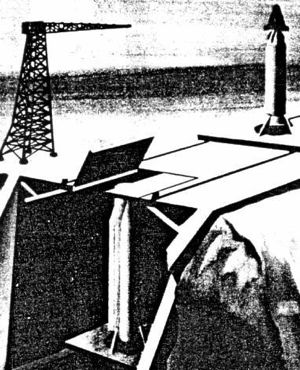
Home - Search - Browse - Alphabetic Index: 0- 1- 2- 3- 4- 5- 6- 7- 8- 9
A- B- C- D- E- F- G- H- I- J- K- L- M- N- O- P- Q- R- S- T- U- V- W- X- Y- Z
SLS
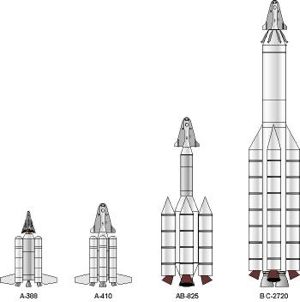 SLS Family Credit: © Mark Wade |
Status: Study 1960.
By stressing the concept of a single liquid stage with a single engine, it was felt that a high reliability for the over-all system could be achieved. Furthermore, by starting out from the very beginning with the concept that this was to be a standardized vehicle for a wide variety of space missions, it was felt that a basically good design could be achieved which would be useful for '…at least five, and perhaps ten years…' as a work-horse booster.
In fact the design philosophy of this 'Space Launching System' was decades ahead of its time. Due to short-term funding restrictions, the Air Force selected adding solid rocket boosters to the Titan 2 ICBM for its SLV-4 space launch requirement. If they had gone forward with the Space Launching System, they would have fielded the equivalent of the Ariane 5, Delta 4, or Atlas 5 forty years earlier. Such a system would probably still be in use today, and in no need for replacement.
The Air Force had sponsored key technology development in the late 1950's to prepare for the SLS. This included the successful testing of a Titan LR-87 engine to burn liquid oxygen and hydrogen in 1958-1960, and initial contracts for test of 100 inch segmented solid rocket boosters in 1959-1960.
The smallest member of SLS was sized to boost the Air Force's Dynasoar manned spaceplane into low earth orbit. The 'A' liquid core stage was limited to 14 feet diameter to allow rail transport. The 100 inch diameter of the solids were set by the limitation of Aerojet's heat-treat facility. This had the capability to put 9 metric tons of payload into low earth orbit.
To support the Air Force's project Lunex moon landing project, 'B' and 'C' Lox/LH2 stages were conceived. These were 25 feet in diameter, and their lateral solid boosters 180 inches/15 feet in diameter. Both would have to be transported by ship.
A decision to proceed with the Space Launching System in July 1961 would have resulted in first flight of the A vehicle in mid-1964, first manned launch in mid-1965, first launch of the BC super-booster in mid-1966, and the first manned landing on the moon in late 1967. Instead NASA was given the Apollo program, the Titan 3 was developed for the Air Force's launch needs, and an opportunity to build a flexible launch system that would still be in use today was lost.
| SLS A-410 American orbital launch vehicle. The smallest identified member of the SLS family, selected to place the Air Force Lunex lunar lander re-entry vehicle in a low earth orbit for initial tests, was the A-410. This consisted of the 'A' LOx/LH2 stage supplemented by 100-inch diameter solid fuel booster rockets. |
| SLS BC-2720 American orbital launch vehicle. The BC-2720 was the member of the SLS family selected to boost the Air Force Lunex lunar lander on a direct lunar trajectory. This would have used four 180 inch solid rocket boosters strapped around an the 'C' LOx/LH2 core vehicle. The core would have required either 12 J-2 engines or 2 M-1 engines. The translunar injection third stage was the 'B', with a single J-2 engine. |
| SLS AB-825 American orbital launch vehicle. The AB-825 represented a medium launch vehicle of the USAF 1961 Space Launching System family. The AB-825 would have conducted earth orbit tests of partially-fuelled Lunex lunar lander stages, and also have boosted the Lunex manned glider on circumlunar test flights. It consisted of the 'A' stage and 'B' stages with 180 inch diameter short-length solid fuel booster motors. |
| SLS A-388 American orbital launch vehicle. The A-388 was the version of the Space Launching System family proposed to fill the SLV-4 requirement - boost to orbit of the Dynasoar manned spaceplane. The booster was dubbed 'Phoenix' - perhaps a hope it could be rescued from the ashes of the manned space program having been turned over to NASA.... |
Family: orbital launch vehicle. Country: USA. Agency: USAF.
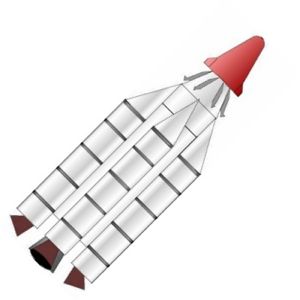 | Lunex B-825 LV Provisional drawing of Lunex B-825 launch vehicle. |
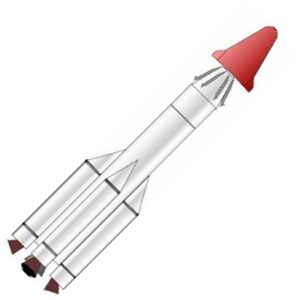 | Lunex A-410 LV Provisional drawing of Lunex A-410 launch vehicle. |
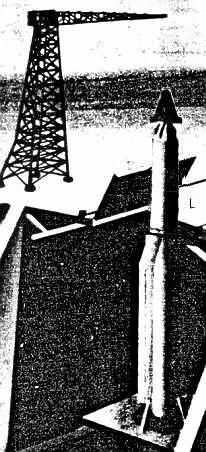 | Lunex BC-2720 LV Lunex BC-2720 launch vehicle installed on the pad. |
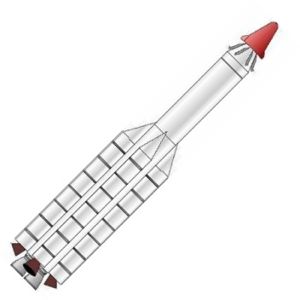 | Lunex BC-2720 LV Lunex BC-2720 launch vehicle. |
1961 - . Launch Vehicle: SLS.
- USAF heavy-lift launch vehicles for the late 1960's - .
Nation: USA.
Air Force completed studies on a family of advanced heavy-lift launch vehicles for use in the late 1960's The launchers used solid rocket boosters together with Lox/LH2 upper stages. The modular stages could be combined in various ways to achieve a range of launch vehicles (as for the USAF Lunex lunar base project). These studies would provide the basis for the later Titan derivatives and, eventually, the final space shuttle design.
Back to top of page
Home - Search - Browse - Alphabetic Index: 0- 1- 2- 3- 4- 5- 6- 7- 8- 9
A- B- C- D- E- F- G- H- I- J- K- L- M- N- O- P- Q- R- S- T- U- V- W- X- Y- Z
© 1997-2019 Mark Wade - Contact
© / Conditions for Use
